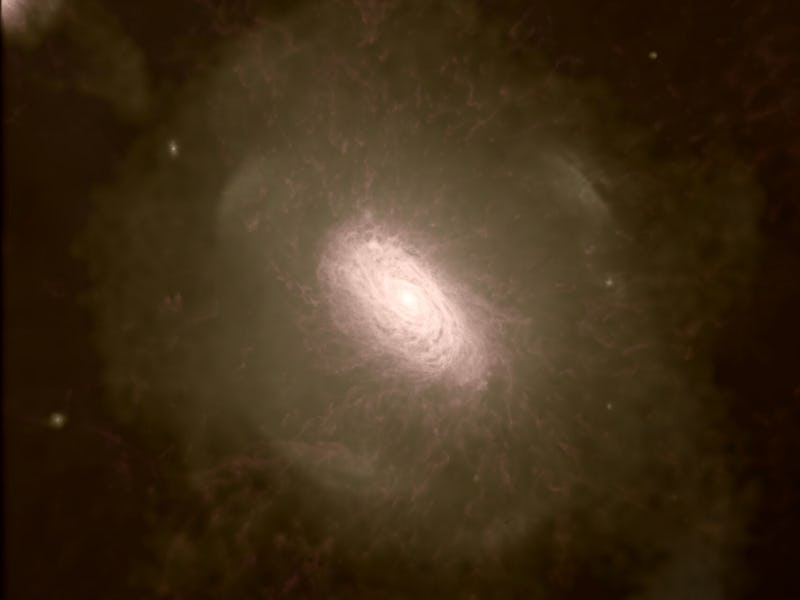"Serendipitous Discovery" Reveals Some of the Universe's Oldest Galaxies
"It was surprising how well our models agreed with the data!"

It’s easy to live next to someone for a really long time without learning much about them, but sometimes our neighbors can turn out to be a lot more interesting than we assume, especially when they’re our galactic neighbors. It might turn out that they have great stories to tell — or that they’re the oldest galaxies in the freaking universe. And hey, wouldn’t you know it, that’s exactly what happened when an international team of astronomers took a closer look at the faint galaxies surrounding our galaxy, the Milky Way.
In a paper published Thursday in the Astrophysical Journal, astronomers at the Harvard-Smithsonian Center for Astrophysics and the Institute for Computational Cosmology at Durham University in the United Kingdom present evidence that the dwarf galaxies surrounding ours are some of the oldest in the universe. These small, dim galaxies are potentially over 13 billion years old, having formed at the end of the so-called early “dark ages” of the universe, when matter cooled off for about 100 million years after the Big Bang.
But this wasn’t even what they were looking for.
“It was something of a serendipitous discovery at some level, because we started the project hoping to actually do something else, which was basically count the number of small galaxies around Milky Way-like galaxies,” Sownak Bose, Ph.D., a postdoctoral fellow at the Harvard-Smithsonian Center for Astrophysics and the study’s first author tells Inverse. “This was a simple counting exercise.”
Many smaller galaxies surround the Milky Way, and astronomers say that they likely formed much earlier than others.
Bose and his colleagues were examining the “luminosity function” of these dwarf galaxies, the measure that describes the distribution of brightness in a cluster of objects — how many galaxies of a certain brightness there are — using the Lambda Cold Dark Matter model, a standard model of cosmology. Simply put, luminosity function is a way of describing galaxies or other star clusters that’s a lot easier than describing each individual star in the mass. When they graphed the luminosity function of our faint galactic neighbors, Bose and his colleagues found that the galaxies pretty much followed a smooth curve, in which there were more faint ones and fewer bright ones.
The key phrase here, though, is “pretty much.”
“It was actually a straight line with something of a kink in it, sort of a valley,” says Bose. “So after some experimentation, we realized what fits this feature is the scale where galaxies transition from those that formed very early on, towards the end of the so-called early dark ages, and the ones that formed much later on.” In other words, they realized that this dip in the distribution of bright and dim galaxies divided the older galaxies from the younger galaxies, a trend that fit the LCDM model, which told them they were onto something.
“It was surprising how well our models agreed with the data!” Alis Deason, Ph.D., a Royal Society University Research Fellow at the ICC and one of the study’s co-authors, tells Inverse. But of course, she notes that they needed to make sure they were right. “Our initial reaction was cautious optimism, and lots of testing!”
After further analysis, the researchers concluded that the fainter, smaller galaxies must have formed much longer than more recent ones. Since stars in galaxies produce a lot of atomic junk and pollution when they die in supernovae, if stars stopped forming a very long time ago, their home galaxies should have less junk from supernovae in them, making them dimmer than galaxies that formed more recently and had more material to pull in from other galaxies and supernovae.
“We find that the old galaxies tend to be less massive in how many stars they have,” says Bose. “It gives you this picture in which small galaxies form first and larger ones form much later on from the merger of many small things.”
Both Bose and Deason are careful to note that they didn’t discover these ancient galaxies, but that they simply identified them as some of the universe’s oldest. Nonetheless, it’s a big deal because these direct observations confirm that the LCDM model of the universe is likely correct, meaning that luminosity function could be a reasonably reliable way to tell the age of a galaxy.
Now that they’ve identified these old galaxies, the researchers can look at them even more closely to learn about the conditions of the early universe.
“We’d like to explore how we can use these tiny dwarf galaxies to learn more about the early universe,” says Deason. “For example, what can their properties (e.g. sizes, chemical composition) tell us about these critical early stages of galaxy formation?”